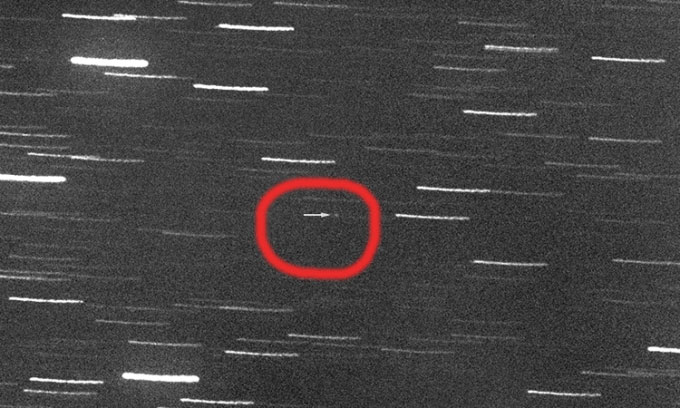Astronomers Capture Image of Large Asteroid Comparable to a House, Measuring Approximately 4.2 – 9.5m in Diameter, Passing Close to Earth.

Asteroid 2022 AC4 appears as a small bright dot (marked by an arrow) in a photo taken from Italy on January 10. (Photo: Gianluca Masi/Virtual Telescope Project).
At 12:19 PM on January 11 (Hanoi time), asteroid 2022 AC4 flew by Earth at a distance of only 93,300 km. This number may seem large to humans, but in reality, this distance is less than a quarter of the distance between Earth and the Moon. According to NASA data, 2022 AC4 is the closest asteroid to Earth in at least two months.
At its closest approach to Earth, 2022 AC4 was traveling at a speed of 30,000 km/h. Experts estimate the diameter of this asteroid to be approximately 4.2 – 9.5 meters, meaning it could be the size of a house.
Astronomer Gianluca Masi, manager of the Virtual Telescope Project in Italy, captured an image of 2022 AC4 as it passed by on January 10. At the time of the photo, the asteroid was about 350,000 km away from Earth. In the image, 2022 AC4 appears as a faint dot amidst numerous streaks of light caused by blurred stars. It is marked by a small arrow in the image.
The Lemmon Mountain Survey discovered 2022 AC4 on January 9, just a few days before it flew close to Earth. Despite its proximity, 2022 AC4 was not classified as a Potentially Hazardous Asteroid (PHA) by NASA’s Center for Near Earth Object Studies (CNEOS) because it does not pose a threat to Earth.
To be classified as a PHA, an asteroid not only needs to come close to Earth but also must meet certain size criteria. Specifically, according to CNEOS, an asteroid that is more than 7.4 million km away from Earth or has a diameter of less than 152 meters is not considered a PHA.
2022 AC4 is not the only asteroid attracting attention during this time. On January 19, asteroid 7482 (1994 PC1), measuring approximately 1,000 meters across, will pass by Earth at a distance of 1.93 million km. It is predicted not to collide with Earth but is still classified as a PHA. It will not come this close again until the next century.


















































